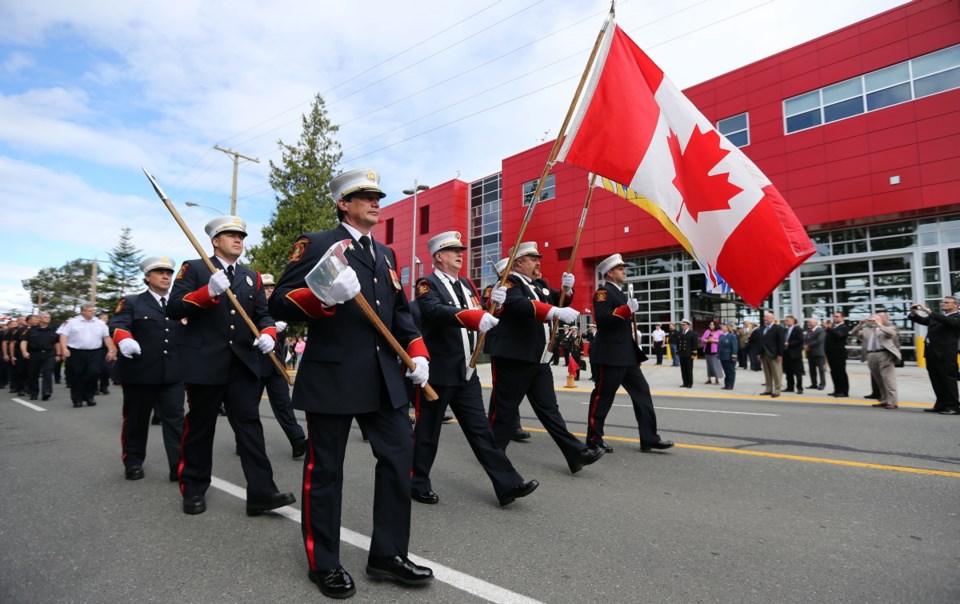In all the years Geordie Douglas has been volunteering with fire departments, he’s never worked anywhere quite like the new fire hall at CFB Esquimalt.
The $27.3-million facility, officially opened Friday after three years of construction, is a state-of-the-art emergency centre — and a big step up from its predecessor, a Second World War-era building too small for the department’s needs.
“We had guys here from View Royal taking notes — they haven’t seen anything like it,” said Douglas, the chief training officer.
For starters, there’s new equipment in the alarm dispatch monitoring room and cleaning equipment in the truck bay. A television room complete with lounge chairs offers plenty of space for winding down, while the dorms give the 56 firefighters — 20 are on duty at a time — a chance to catch a few winks, without having to listen to their neighbours snore.
The changes allow the fire department to consolidate its operations — for years, its staff and gear were housed in a number of buildings.
“The guy I need to speak with is in the office next door to me, whereas before it was across the street and down the road,” said deputy chief Rick LeQuesne.
They also improve its ability to respond to emergencies. The control room was designed to help co-ordinate responses to earthquakes, tsunamis or even a nuclear emergency.
The building itself can withstand up to a 9.0-magnitude earthquake and can run on its own water and energy supply for up to seven days of continuous operations in case of extreme emergencies.
“We had the opportunity to design this from the ground up and not retrofit it,” said Lt. Dwight Ince, deputy operations officer of CFB Esquimalt.
Outside, 21 video cameras and hydraulic bollards — metal cylinders that can be raised out of the ground to stop vehicles from ramming into the building — help to maintain security.
Along with the building, training facilities have been upgraded. Before the move, much of the training was done off-site. Now, the majority of courses can be taught on classroom computers.
The on-site outdoor training tower simulates fire and rescue situations, even pumping in artificial smoke to make it more realistic.
Douglas is still getting used to his new surroundings. “I’ve seen the building evolve from a hole to concrete walls to the day we moved in,” he said. “I enjoy coming to work every day. I’m living the dream.”



